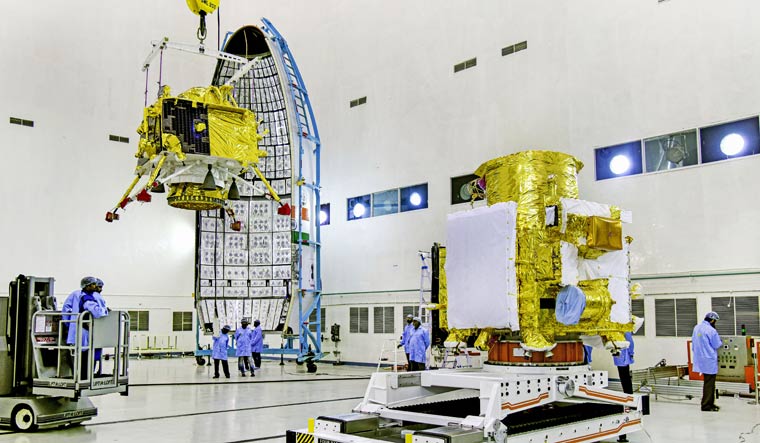Spacecraft parameters of India's second moon mission Chandrayaan-2 aimed at landing a rover on the unchartered Lunar South Pole are "normal", the Indian Space Research Organisation (ISRO) said on Monday, as it successfully raised its orbit around the Earth for the third time.
In a giant leap for the country's ambitious low-cost space programme, ISRO's most powerful three-stage rocket GSLV-MkIII-M1 had launched the spacecraft into the Earth's orbit on July 22 from the spaceport in Andhra Pradesh's Sriharikota.
The agency has planned a total of 15 orbit raising manoeuvres before the 3,850 kilogramme (kg) three-module Chandrayaan-2 comprising an orbiter, lander and rover is brought around the Moon, which is at a distance of nearly four lakh kms from the Earth.
"Third earth-bound orbit raising maneuver for Chandrayaan-2 spacecraft has been performed successfully today at 15:12 hrs (IST) as planned, using the on board propulsion system for a firing duration of 989 seconds.
"The orbit achieved is 276 x 71792 km. All spacecraft parameters are normal," ISRO said in an update.
The fourth orbit raising manoeuvre is scheduled on August 2, between 2 pm- 3pm (IST), it said.
The first and second earth bound orbit raising manoeuvres were carried out successfully on July 24 and 26 respectively.
On entering the Moon's sphere of influence, the on-board propulsion system of Chandrayaan-2 will be fired to slow down the spacecraft, which will enable it to be captured into a preliminary orbit around the Moon, ISRO had said.
Later, through a set of manoeuvres, the orbit of Chandrayaan-2 around the moon will be circularised at 100 km height from the lunar surface, it said.



